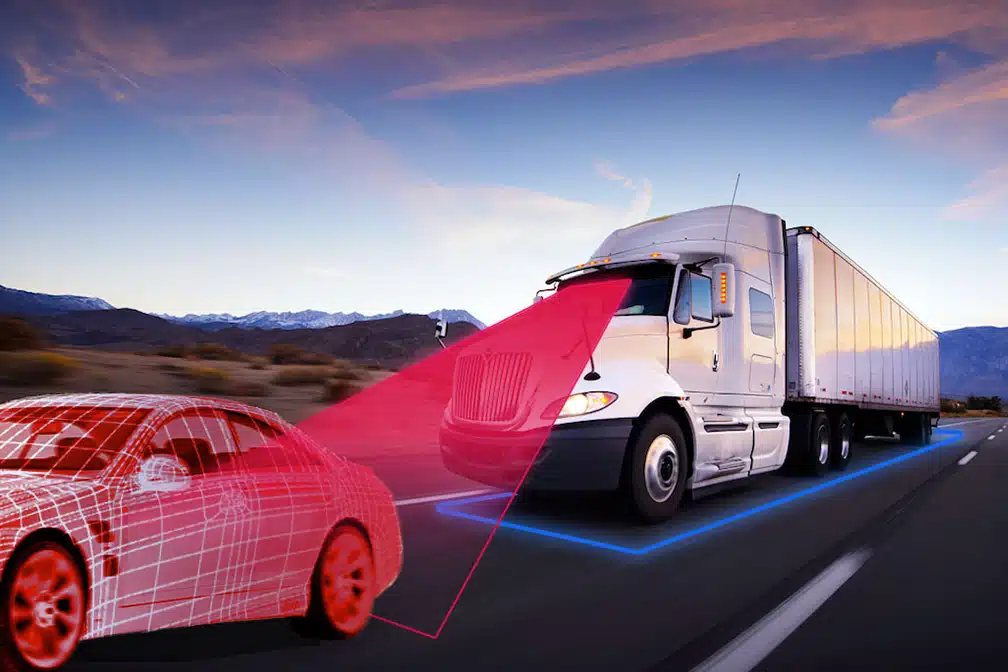As the renowned Model 389 gracefully takes its final curtain call after a remarkable 17-year journey, the stage is now set for the eagerly anticipated arrival of
More
May 19, 2024 7:05 pm

Collision Mitigation Systems: Advantages and Disadvantages in Trucking
Collision Mitigation Systems (CMS) are cutting-edge safety features intended to lower the chances of accidents, on the road. These systems utilize sensors and cameras to identify collisions with vehicles or obstacles notifying the driver and potentially taking corrective measures like applying brakes or steering. In the realm of trucking, CMS comes with its set of advantages and disadvantages. Here’s a breakdown:
Enhanced safety: CMS aids in accident prevention by identifying and warning drivers about collisions providing them with time to react and avoid accidents.
Reduced liability: With accidents trucking companies can minimize their liability risks and insurance claims ultimately reducing costs.
Improved driver retention: Drivers who feel secure due to safety technologies are more likely to stick with a company for the haul.
Enhanced efficiency: By decreasing accident probabilities CMS contributes to keeping trucks operational and minimizing downtime.
You can read more information about trucking technology.
Cost factor: The installation and upkeep of CMS can be costly potentially serving as a hurdle for trucking enterprises.
False alerts: Occasionally CAS may trigger alerts that could distract drivers and diminish their confidence, in the system. Driver training is essential, for teaching drivers how to effectively utilize CMS, which may necessitate time and resources. However, CMS may not always be as effective in weather conditions. When faced with unpredictable road hazards. Numerous trucking companies have embraced Collision Mitigation Systems to enhance safety and reduce accident risks on the roads.
Schneider National has utilized the OnGuard Collision Mitigation System since 2011 equipped with radar sensors of detect objects up to 500 feet and automatically apply brakes to prevent collisions. J.B. Hunt implemented the Wingman Fusion Collision Mitigation System in 2017 utilizing radar and camera sensors to detect potential collisions and either alert the driver or take corrective measures, like braking.
Ryder has also integrated various Collision Mitigation Systems into their safety technology package, including Lane Departure Warning, Forward Collision Warning and Automatic Emergency Braking. Knight-Swift Transportation has been incorporating Collision Mitigation Systems into their trucks since 2015. These systems offer features, like Adaptive Cruise Control, which adjusts the truck’s speed according to traffic conditions and Lane Departure Warning, which notifies the driver if the truck veers out of its lane.
In general Collision Mitigation Systems can bring about advantages for the trucking sector by enhancing safety reducing liability and boosting efficiency. However, they also pose challenges that must be dealt with such as costs, false alerts and driver training. Addressing these issues is crucial to ensure the effectiveness and acceptance of these systems, within the trucking community.
For more information and articles from the trucking industry, follow us on Facebook or subscribe to our Truck Driver News newsletter.
As the renowned Model 389 gracefully takes its final curtain call after a remarkable 17-year journey, the stage is now set for the eagerly anticipated arrival of
MoreDoes Gamification Technology work to Engage Drivers? Boosting Truck Driver Engagement and Efficiency Through Gamification Strategies The trucking industry is currently on the brink of a significant
MoreAutonomous Vehicles are meant to enhance trucking, not to replace truckers. Safety, efficiency, and sustainability value adds benefit the industry as a whole.
MoreThe nature of the job, which involves long periods of time spent alone on the road, can be a conducive
MoreRyder System and Kodiak Robotics Partner to Create an Autonomous Truckport - Their First Port, Established in Houston, is Set
MoreSince its inception in 1993 with a modest fleet of 10 owner operators and 20 trailers, Riverside Transportation (RTI) has
MoreIn the sprawling landscape of commerce, where goods traverse the highways connecting cities and states, a perplexing question has emerged:
MoreThe EPA's latest emission standards detailed in a final rule issued on March 29 are sparking vigorous debate within the
More